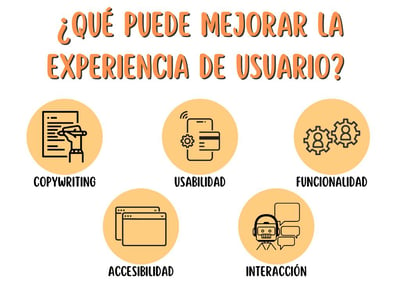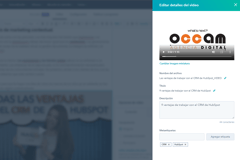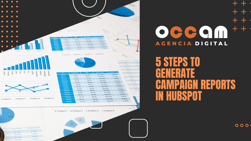Conversion rate, what it is, how to calculate it, and how to improve it
Index Content
The conversion rate is the percentage of visitors who perform a given action on a website. That is, the number of users who visit a web page and "convert" by doing what the site invites them to do. The ratio is an indicator of the performance of the KPIs set by the company. It is useful in any type of business, but is most effective in the digital world. It should be used in digital marketing strategies to improve ROI. A conversion does not always guarantee a sale, but usually increases its chances. Monitoring the conversion rate allows to translate into numbers the performance of the campaign and if necessary, optimise it.
Based on the objectives of the marketing campaign, the industry and the brand, the conversion rate will be set in some actions or others. These may be the actual completion of a purchase, interaction with the company, subscriptions, ebook downloads or willingness of visitors to submit their personal data, among others. To know the effectiveness and impact of marketing activities it is essential to calculate the investment rate. Being an objective measurement provides a clear view of the behaviour of leads in the sales funnel. Along with the sources of traffic and the average ticket, this percentage is part of the most used analytics in ecommerce.
what is the purpose of knowing the conversion rate?
- To increase ROI.
- Decrease the cost of customer acquisition.
- Improve the bounce rate.
- Attract potential customers and new customers.
- Optimise the UX.
- Be visible in search engines.
- Make a profit.
what is measured in the conversion rate?
The conversion rate is applicable to digital marketing and online sales actions. Depending on which one it is, the data that is measured may vary. The conversion rate in marketing is fixed in some of the following:
- Website visits.
- Video views.
- Downloads of ebooks.
- Completed forms.
- Email marketing email openings.
- Interaction with CTAs.
Conversely, the sales conversion rate pays attention to others:
- Number of product cards.
- Visits to catalogue pages.
- Percentage of checkouts.
- Interaction with follow-up emails.
- Product rating.
In general, the investment rate also puts the focus on the user experience. Finding out the level of customer satisfaction will allow you to tailor your website to their needs. This will ensure greater success with your target audience.
Types of conversions
- Overall conversion rate: This metric is the most commonly used metric to measure the conversions to leads that a website achieves with its marketing campaigns.
- Website conversion: This is a specific rate as it finds out which landing pages achieve more conversions on a website.
- Channel conversion: Similar to the website conversion, it provides specific information, in this case it informs about the platform that manages to generate more conversions.
- Conversion by keywords: Focuses on discovering which keywords are of most interest to users. By knowing this information, the brand will know which keywords to invest in.
- Conversion by campaigns: Determines which ad has worked best in the marketing strategy, so it can be present in future campaigns.
How to calculate the conversion rate
The conversion rate is calculated through a specific formula. To do this, you need to know the number of visitors to the website in a given period of time and the number of conversions that have taken place in the same period. The formula for acquiring the percentage consists of dividing both values and multiplying them by 100.
.jpg?width=500&height=146&name=Presentaci%C3%B3n%20de%20Educaci%C3%B3n%20Colores%20Pastel%20Cuadr%C3%ADcula%20y%20Tablas%20Resultados%20de%20Experimento%20(1).jpg)
There are tools that perform this action automatically. Google Analytics is one of the most famous as it provides data on the number of visitors to the website, time spent on each page and content. Heat maps or satisfaction surveys, among others, will serve to complement this information and obtain the user's full journey through the website along with their opinion. Depending on the sector, the conversion rate percentage will vary to consider it an optimal business. In the ecommerce sector the average conversion rate is 1.84% while in B2B businesses it is 2.23%.
How to increase the conversion rate
1. Be transparent
To gain the user's trust and capture their attention, it is advisable to clearly express what products or services you offer. In addition, you should summarise the value proposition in measurable and recognisable data such as price, delivery, cancellation fees or guarantee. The content of the message will be the first thing that strikes the visitor when they enter a website.
2. Practice the lead magnet
The lead magnet technique will allow you to capture leads with attractive offers. Based on the profile of the buyer persona, certain actions will work, such as time-limited discounts, high-value downloadable items or loyalty rewards, among others.
3. Work with segmentation
Knowing your target audience is essential for a correct marketing plan. By segmenting users by characteristics or stages in the sales funnel, landing pages can be adapted to each specific case. For example, if the customer has reached the page through a promotional ad, the landing page should have a banner with that promotion. Otherwise, they will lose interest and leave the site without making a purchase.
4. Attract quality traffic
For the marketing strategy to work, quality traffic must first reach the website. This is achieved through different channels:
- Search engines: Much of the traffic comes organically to the website. Search engines crawl the content of your website and, depending on how optimised it is, your keywords will attract more or less traffic.
- Backlinks: Referral traffic or backlinks bring traffic through other websites, which act as prescribers and send new customers.
- PPC campaigns: Advertising is an effective method to attract web traffic. It requires a constant investment, but the benefit is immediate. There are high guarantees of visibility using ads on search engines and social networks.
- Email marketing: Mailing is a marketing action that serves to impact customers in a direct way. Enhancing the relationship with users will ensure their trust and encourage them to visit the website.
5. Facilitate the purchasing process
The simpler the purchasing process is, the more the user will be encouraged to take part in it. The maximum number of payment and financing methods should be incorporated. In addition, design a one step checkout.
6. Adapt the website to all devices
A mobile first strategy will mean that user interfaces are designed to fit on small screens such as tablets or smartphones. This will improve the mobile user experience by ensuring optimal loading speed and high quality multimedia content.
7. Check the UX
The user is the cornerstone of any marketing campaign, so it is important to tailor the website to provide a satisfactory experience. Checking if the UX is working properly will allow you to focus on the areas that are failing and optimise them.
8. Analysing data
By using automation tools, you can monitor your marketing strategy and obtain valuable data to determine the causes of website abandonment. By measuring, analysing and reporting on these percentages, you can understand user behaviour and measure the success of your business.



.jpg?width=400&height=275&name=CALCULO%20CONVERSION_page-0001%20(1).jpg)



